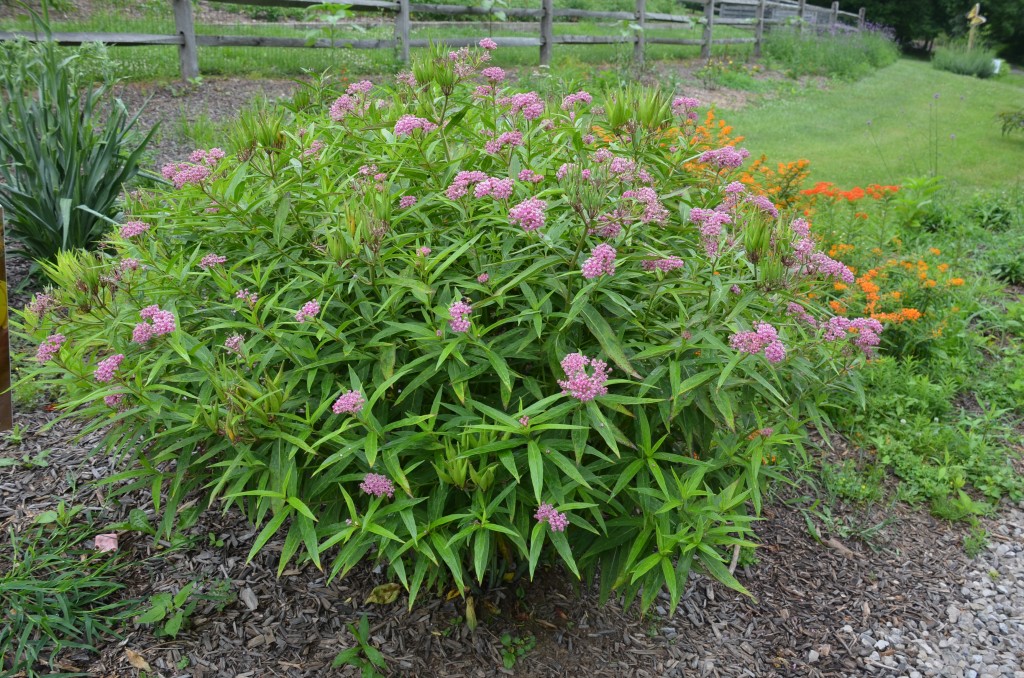Swamp milkweed (Asclepias incarnata) is an erect, clump-forming, U.S. native plant indigenous to swamps, bottomlands and wet meadows (USDA hardiness zones 3 to 6). Obviously, it prefers moist soils but grows equally well in average, well-drained garden soils. Full sun is best, but copes with some light shade.
As its common name indicates, it makes a great choice for planting in moist spots such as in rain gardens and along stream/pond banks. No butterfly garden is complete without swamp milkweed. The flowers of swamp milkweed attract several species of butterflies including Monarchs. Monarch larvae (caterpillars) prefer swamp milkweed foliage for a nourishing food source over butterfly weed (A. tuberosa).
New plants emerge slowly in late spring. It develops a deep tap rootsystem which is best left undisturbed once established. Swamp milkweed grows 3 to 4 feet tall (sometimes to 5 feet) and 2 to 3 feet wide on branching stems. Narrow, willow-like leaves are 3-6 inches long with a tapered point. Stems exude a toxic milky sap when cut.
The clustered flowers are very attractive and fragrant. Small individual ¼-inch wide blooms are a pink to light lavender color; tight clusters (umbels) of five reflexed petals sit atop tall stems in July and/or August. Flowers are followed by attractive 2-4 inch long seed pods.
Swamp milkweed is short-lived, often 2-3 years, but it frequently re-seeds itself. In the fall the mature pods split open to release silky-haired seeds that are carried away on a blustery autumn day.
Swamp milkweed has no serious insect or disease problems. Aphids may be a significant pest. Deer generally leave milkweeds (Asclepias spp.) alone.


 Posted in
Posted in 
